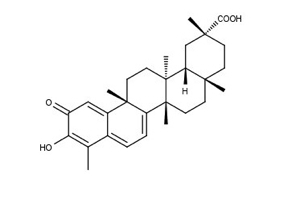While it is likely that all Ubiquitin-Like proteins (UBLs) will be important for drug discovery because of these associations, Ubiquitin has been the most completely validated for this purpose by genetic, biological, and biochemical evidence. The enzymes of the Ubiquitin pathway are emerging as pioneer drug targets for many therapeutic areas.
The ubiquitin family of proteins is an important means of regulating protein trafficking, cell division, apoptosis, and metabolism in cells. Turnover of most cellular proteins is effected by ubiquitin tagging, which marks them for transport to the 26S proteasome for degradation.

Covalent modification of cellular proteins by the Ubiquitin-like protein SUMO (Small Ubiquitin-like MOdifier) regulates various cellular processes such as nuclear transport and signal transduction. Other UBLs function as modifiers in a manner analogous to that of Ubiquitin, i.e., by conjugation to and deconjugation from specific target proteins. Elevation, absence and the presence of non-functional mutant forms of the Ligases and Hydrolases involved in Ubiquitin protein tagging have been identified in various tissues associated with pathologic conditions. These family members include NEDD8, ISG15, and others.
The 2003 approval of the proteasome inhibitor bortezomib for relapsed refractory multiple Myeloma has validated the Ubiquitin Proteasome pathway for cancer treatment. While bortezomib is an active drug, it produces side effects that often are severe enough to compromise patient compliance, thus limiting its therapeutic potential.
A target class which should be less global than the proteasome and which is linked genetically or biochemically to disease is a subset of the nearly 100 known DUBs also known as Hydrolases or Isopeptidases.
The roles of Isopeptidases include recycling of fused ubiquitin/UBL and processing pro-ubiquitin/UBL by cleavage to the mature form. Removal of ubiquitin or UBL moieties can affect cellular physiology in a number of ways, and isopeptidases, like E3 ligases (the enzymes which catalyze the final step in the ubiquitylation of target proteins), have been linked to numerous pathologies including cancer (e.g. USP2. 5, 6, 7, 9, 20, 21, 34, 47, UCHL3, Bap1, AMSH, Den1, SENP5, SENP6), neurodegenerative disease, metabolic disease, and cardiovascular disease.
Thus these enzymes are perceived as promising targets, especially in cancer related drug discovery activities.
A comprehensive portfolio of active DUBs (LifeSensors, BPS Biosciences…) is available for screening purposes and fundamental research. I made a selection of representative enzymes of all five families (defined by sequence homology):
- Ubiquitin-C terminal hydrolases (UCH)
- Ubiquitin specific processing proteases (USPs)
- Machado Joseph Disease Domain proteases (MJD)
- Otubain Proteases (OTU)
- JAMM Domain Proteases (JAMM)
If you need more information about active DUBs, if you want to test them… get in touch through the form below.
In the coming weeks you will find more posts covering Ubiquitin related products (DUB substrates, E3 ligase screening,…) in our “being bio-reactive” series.
Do not miss them! For the time being, you might wan to subscribe to one of the thematic eNewsletters dedicated to Drug discovery or Cell signaling studies here!



